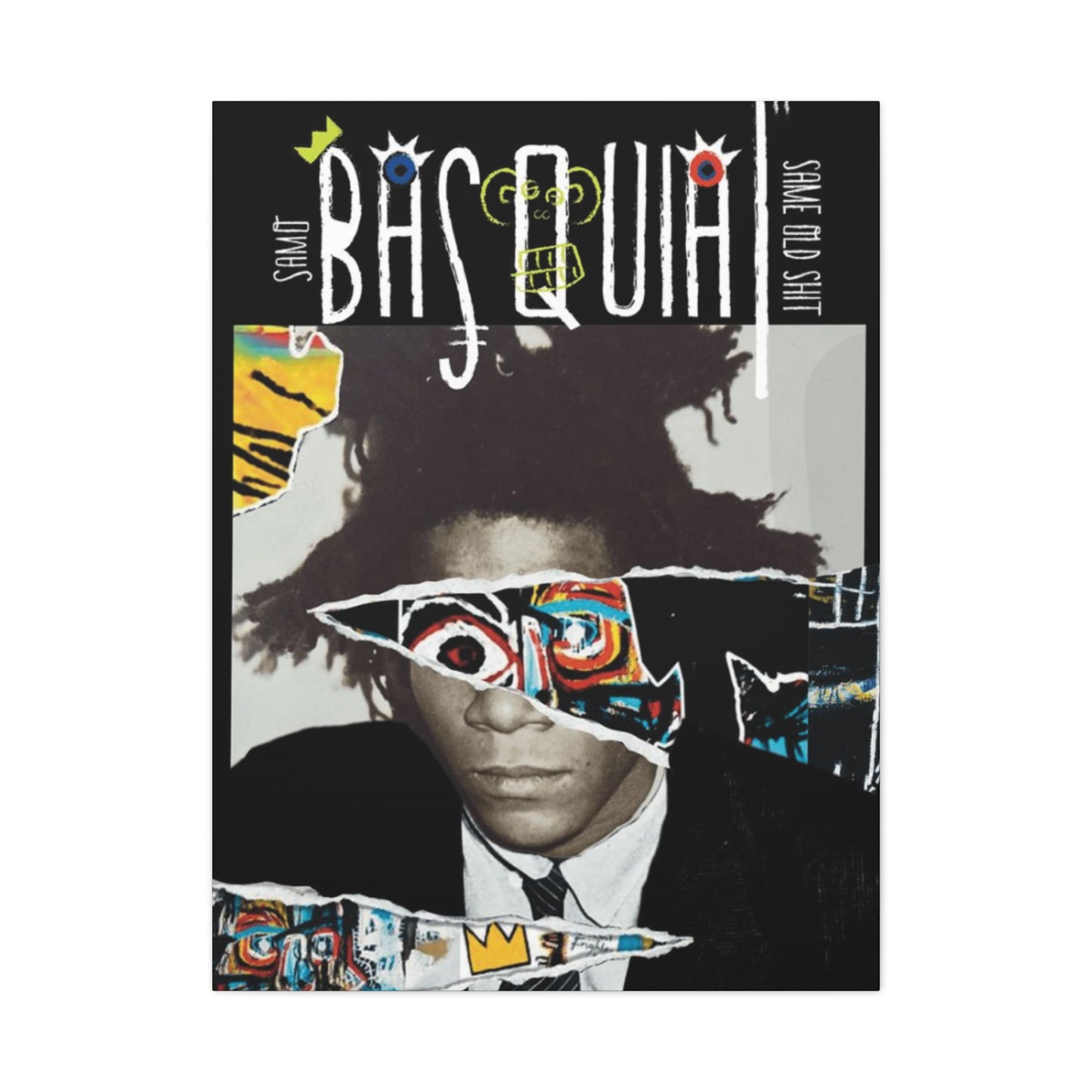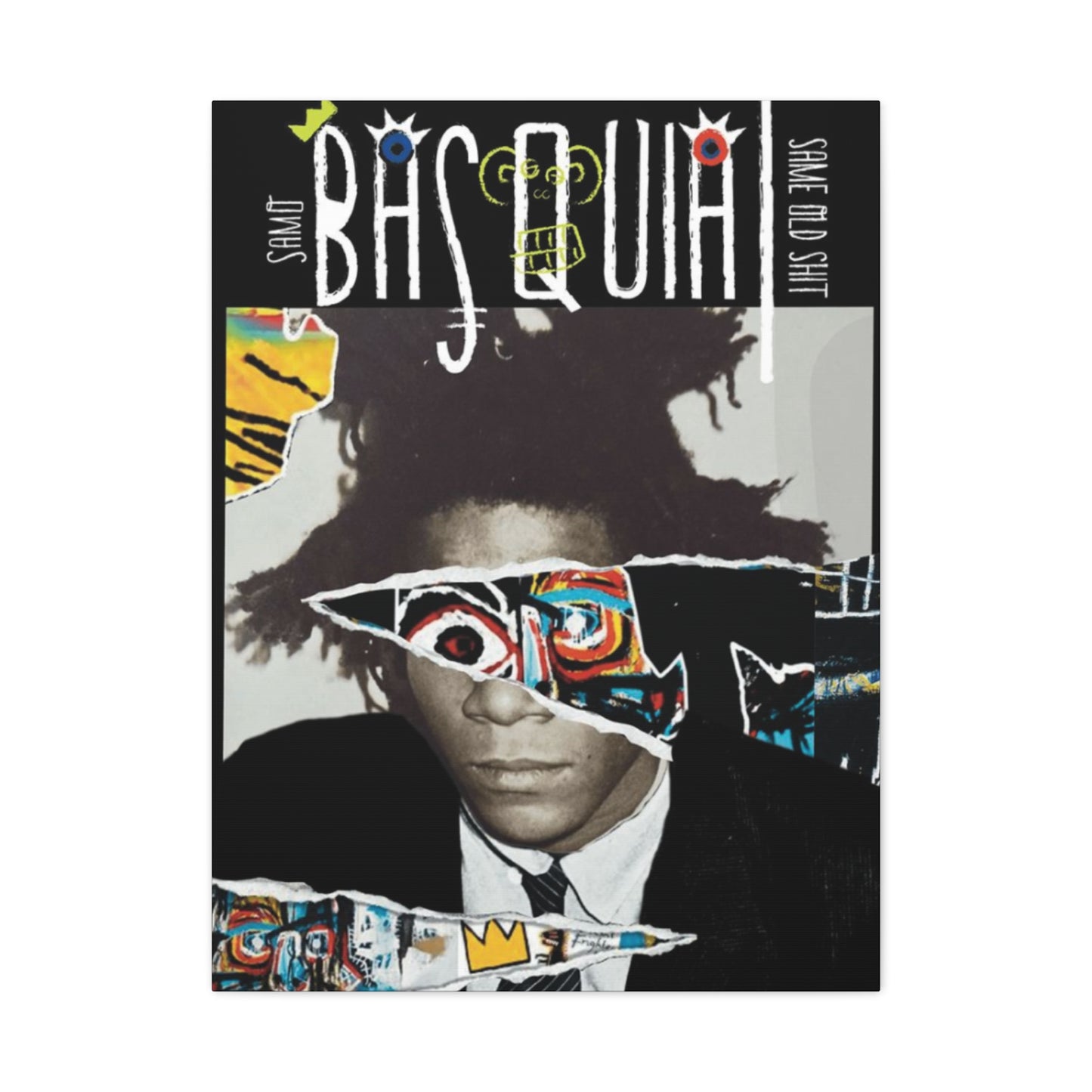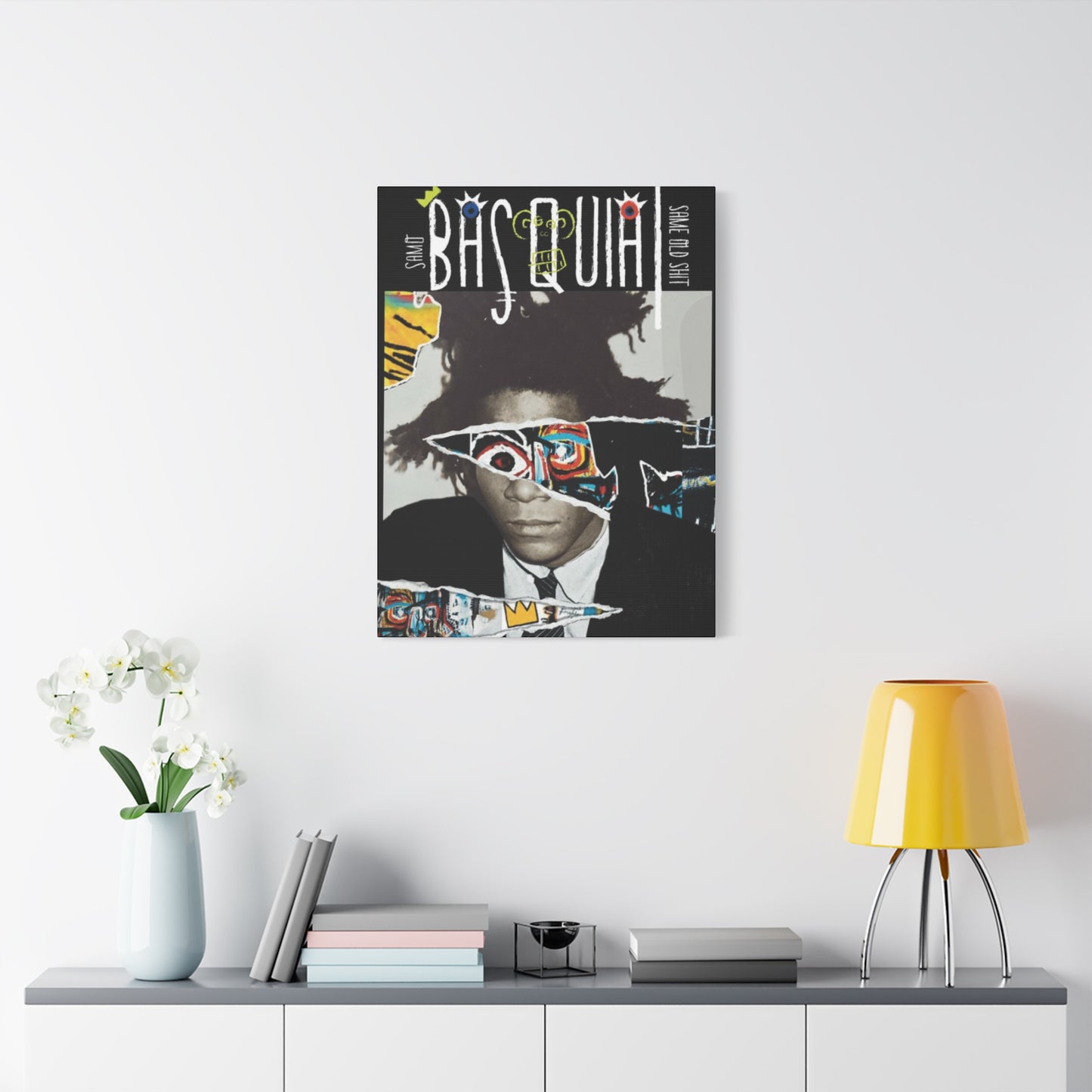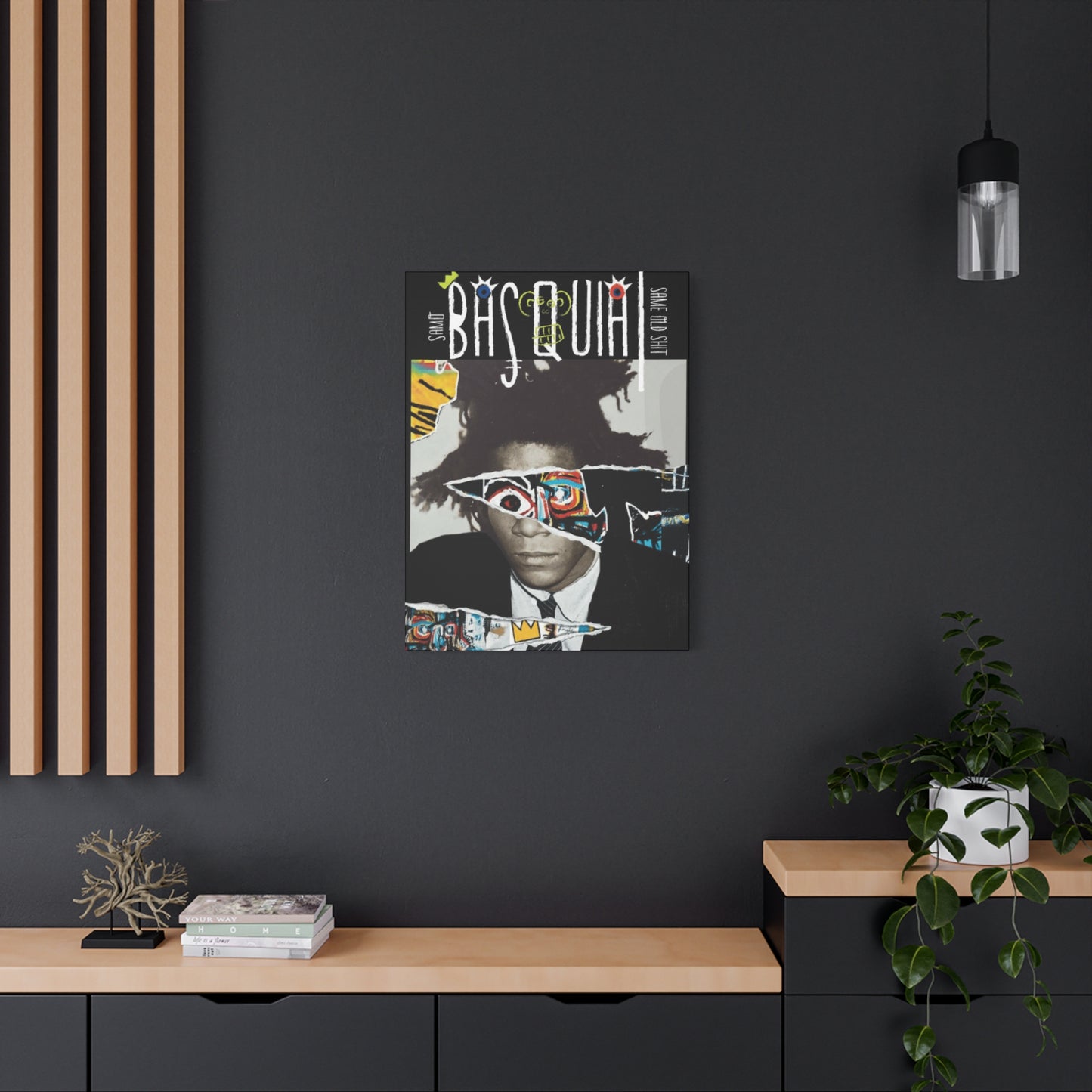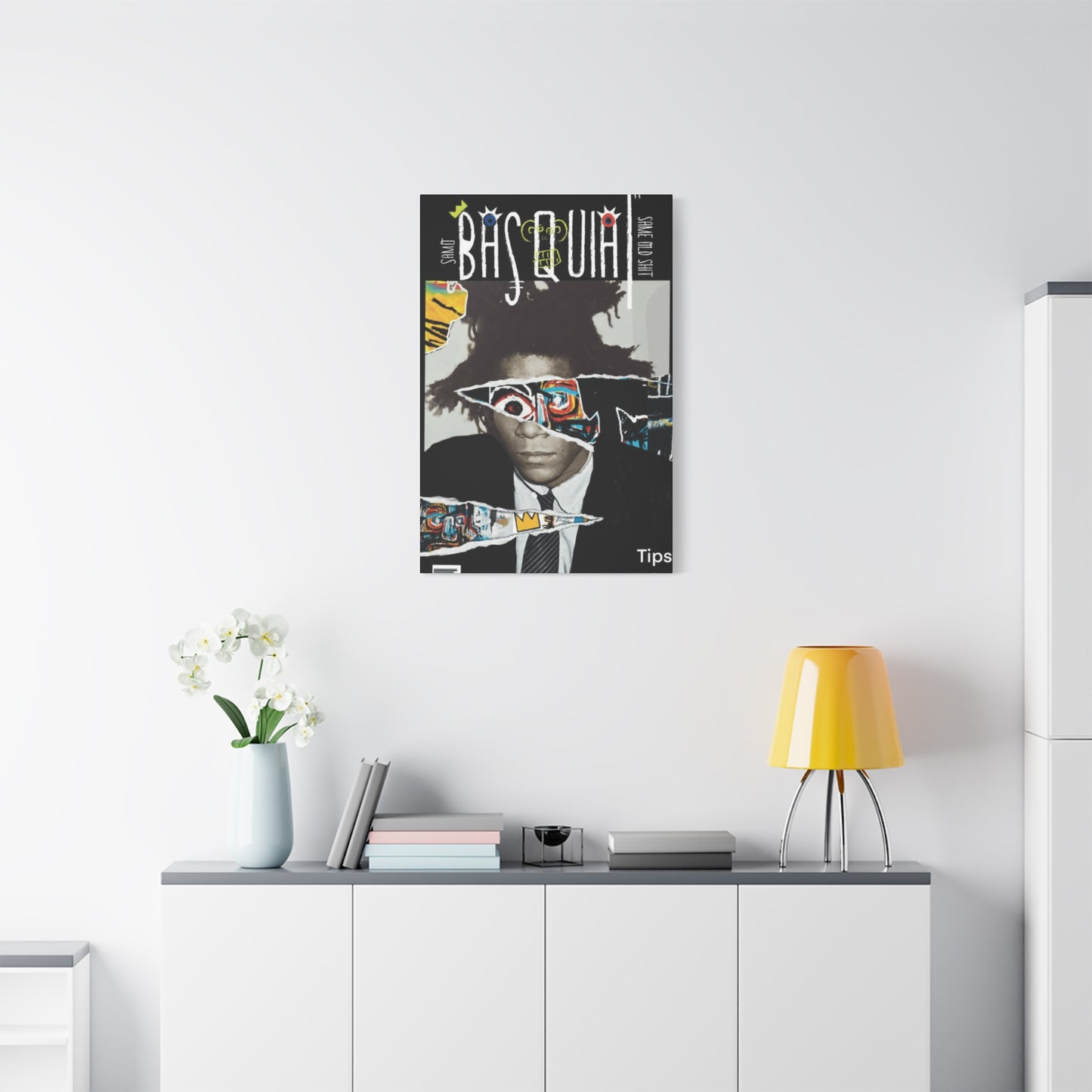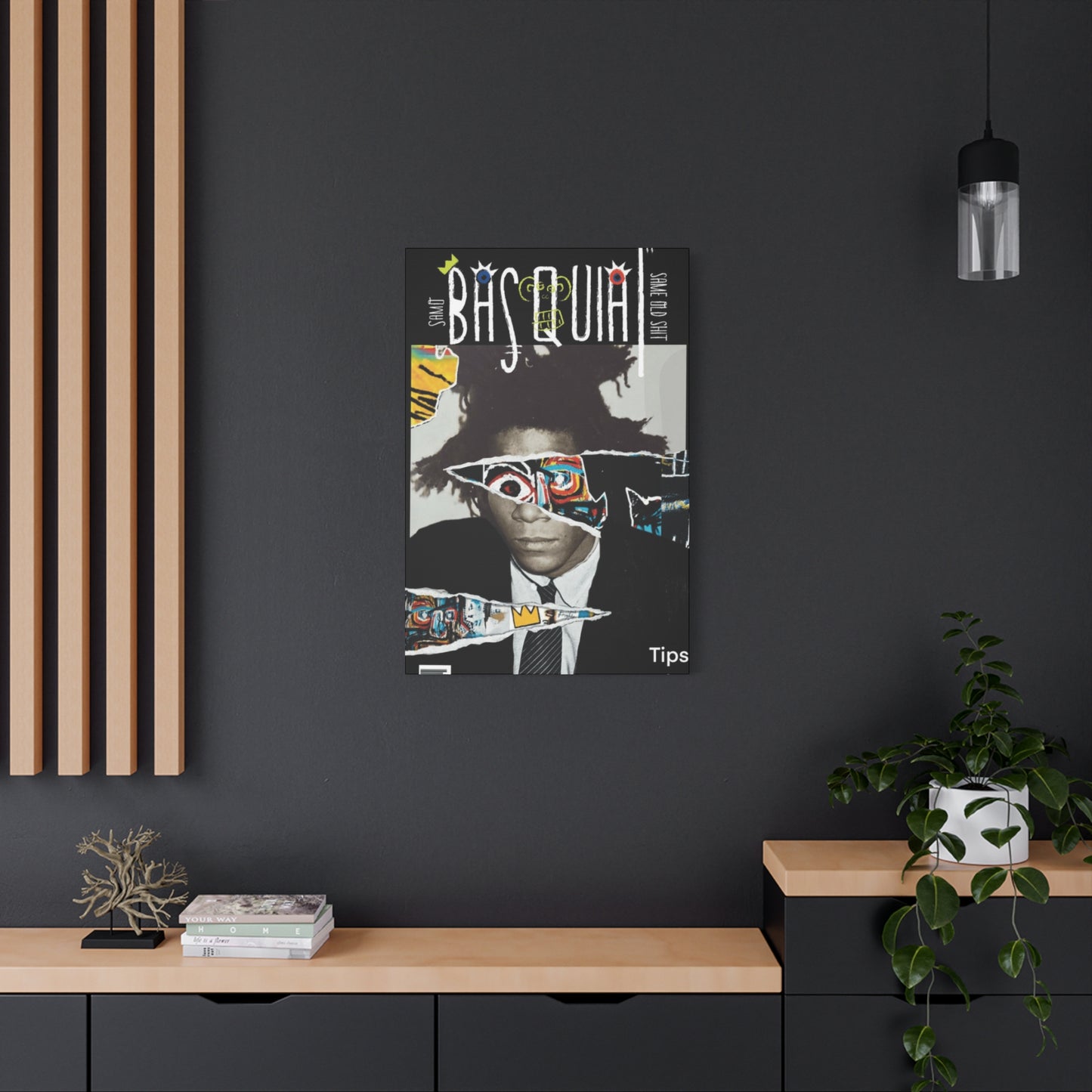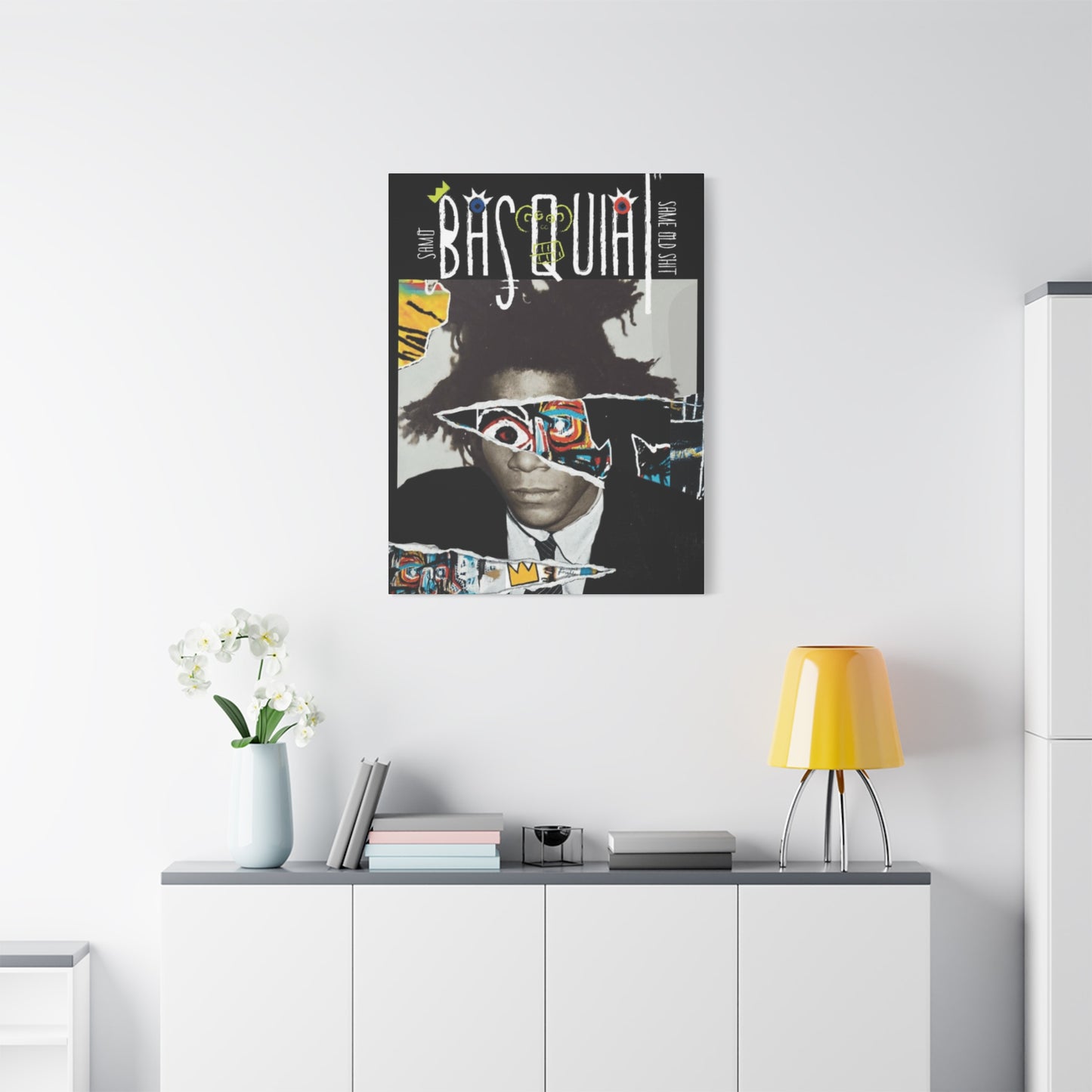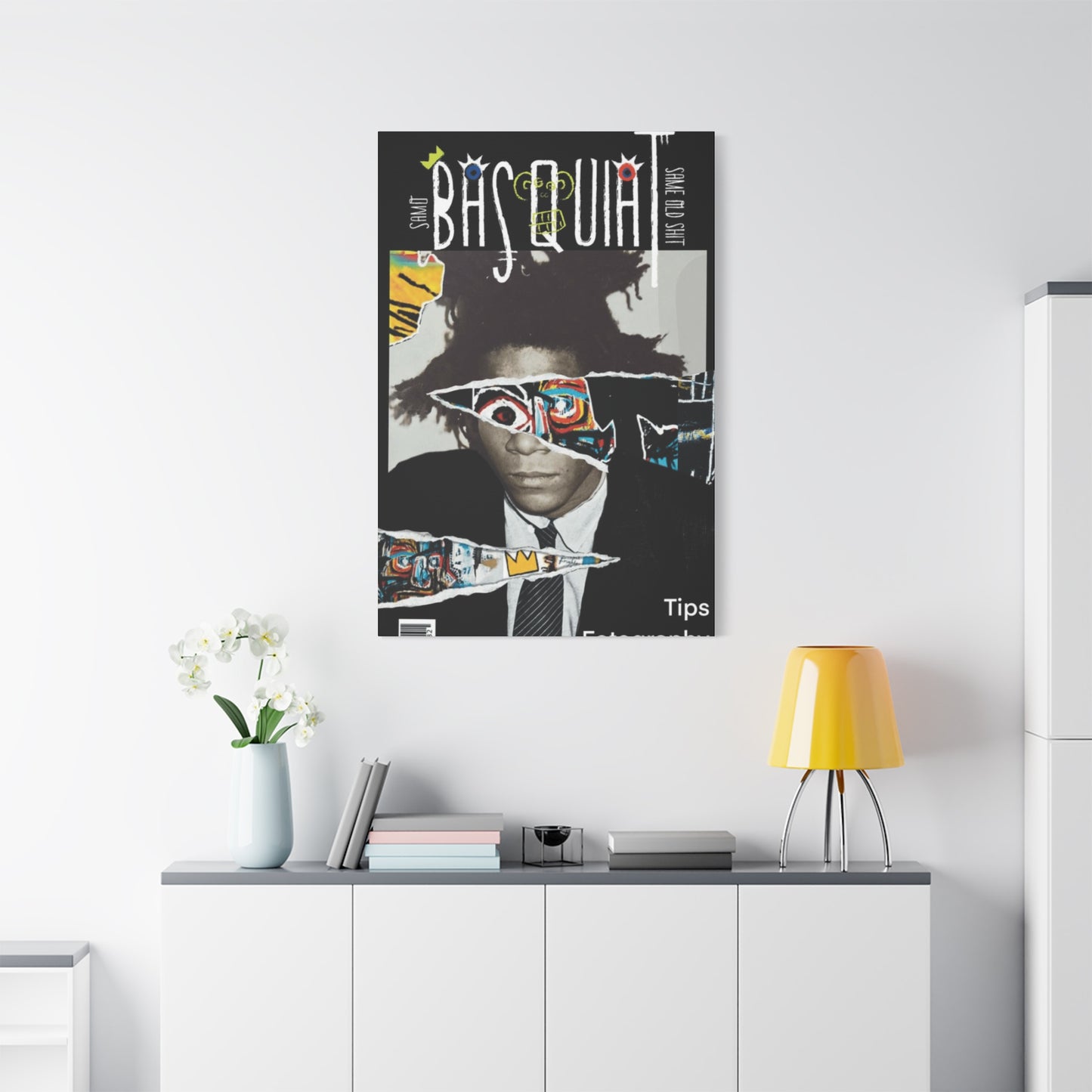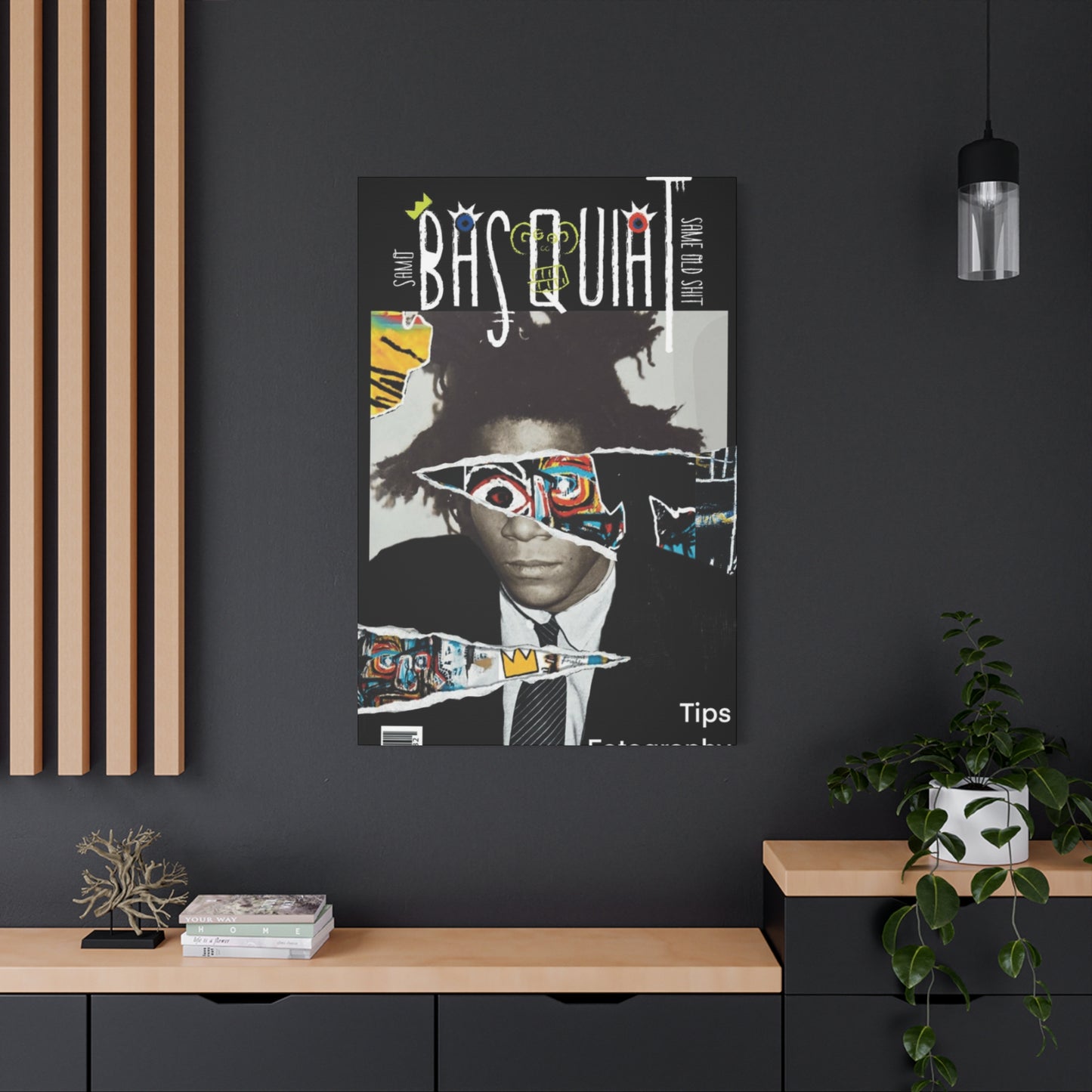Mixed Media Wall Art Like BHS Q-UAIT Is Perfect for Art Enthusiasts
The contemporary art landscape has witnessed remarkable evolution in recent decades, with mixed media artworks emerging as powerful vehicles for creative expression. Among the most compelling developments in this field stands BHS Q-UAIT, a revolutionary artistic movement that seamlessly blends traditional techniques with cutting-edge innovation. This extraordinary art form represents more than mere aesthetic exploration; it embodies a philosophical approach to creativity that challenges conventional boundaries and redefines what contemporary art can achieve in our modern cultural context.
BHS Q-UAIT mixed media art transcends typical categorization, creating immersive experiences that engage viewers on multiple sensory and intellectual levels. The movement draws inspiration from diverse cultural sources while maintaining a distinctly contemporary voice that speaks to current social, emotional, and aesthetic concerns. Artists working within this framework employ sophisticated techniques that combine physical materials with conceptual depth, resulting in pieces that are both visually striking and intellectually provocative.
The significance of BHS Q-UAIT extends beyond individual artworks to encompass broader cultural conversations about authenticity, innovation, and artistic purpose in the digital age. As traditional art forms continue to evolve and adapt to changing societal needs, BHS Q-UAIT represents a bridge between classical artistic values and contemporary expression methods. This movement acknowledges the rich heritage of artistic tradition while boldly embracing new possibilities for creative communication.
Understanding BHS Q-UAIT requires appreciation for its multifaceted nature, which incorporates elements from painting, sculpture, digital media, and performance art. The resulting synthesis creates artworks that exist in multiple dimensions simultaneously, offering viewers varied entry points for engagement and interpretation. This accessibility, combined with sophisticated artistic execution, makes BHS Q-UAIT particularly relevant for contemporary audiences seeking meaningful cultural experiences.
Exploring the Most Celebrated BHS Q-UAIT Mixed Media Masterpieces
The pantheon of BHS Q-UAIT mixed media artworks includes numerous pieces that have fundamentally altered perceptions of contemporary artistic expression. These iconic works demonstrate the movement's capacity to create profound emotional resonance while maintaining sophisticated technical execution. Each masterpiece within this collection represents careful consideration of material properties, conceptual framework, and visual impact, resulting in artworks that continue to influence emerging artists and established practitioners alike.
Among the most celebrated pieces are works that seamlessly integrate traditional painting techniques with three-dimensional elements, creating layered compositions that reveal new details upon extended viewing. These artworks often incorporate found objects, textured materials, and digital components that work together to create cohesive yet complex visual narratives. The careful balance between various media demonstrates the artists' deep understanding of how different materials interact and complement each other within unified compositions.
The iconic nature of these pieces stems not only from their visual appeal but also from their cultural significance. Many BHS Q-UAIT masterpieces address contemporary social issues through sophisticated artistic language that avoids didactic messaging while still conveying meaningful commentary. This approach allows viewers to engage with important topics through aesthetic experience rather than direct confrontation, creating opportunities for personal reflection and cultural dialogue.
Technical innovation plays a crucial role in establishing the iconic status of these works. Artists employ cutting-edge techniques that push the boundaries of traditional mixed media approaches, often developing new methods for combining disparate materials or creating unexpected textural effects. These innovations contribute to the visual uniqueness of each piece while also advancing the overall technical vocabulary available to other artists working within the movement.
The lasting impact of these masterpieces can be measured through their influence on subsequent artistic developments and their continued relevance in contemporary cultural discourse. Many pieces from the early period of BHS Q-UAIT development continue to inspire new generations of artists while maintaining their original power to captivate and challenge viewers. This enduring quality demonstrates the movement's fundamental strength and its capacity to create artworks that transcend temporary trends or fashions.
Harmonizing Abstract Expression with Realistic Elements in BHS Q-UAIT Creativity
The distinctive character of BHS Q-UAIT art emerges through its masterful integration of abstract expressionist techniques with carefully rendered realistic elements. This synthesis creates visual tension that energizes compositions while providing viewers with both familiar reference points and opportunities for imaginative interpretation. The balance between these seemingly contradictory approaches requires exceptional artistic skill and conceptual clarity, qualities that define the most successful works within this movement.
Abstract elements within BHS Q-UAIT pieces often serve as emotional or atmospheric foundations that establish mood and psychological context for more representational components. Artists might employ gestural brushstrokes, color field techniques, or textural manipulation to create environments within which realistic elements can exist and interact. This layered approach allows for multiple reading levels within individual artworks, accommodating viewers with varying degrees of artistic sophistication and cultural background.
The realistic components typically function as narrative anchors or symbolic references that ground abstract elements in recognizable experience. However, these realistic elements are rarely presented in straightforward documentary fashion. Instead, they are often fragmented, stylized, or combined in unexpected ways that maintain the overall artistic coherence while challenging conventional perception. This approach creates artworks that feel both familiar and strange, accessible yet challenging.
Color relationships play a particularly important role in successfully combining abstract and realistic elements. BHS Q-UAIT artists demonstrate exceptional sensitivity to how color choices affect the perceived relationship between different components within mixed compositions. Palette decisions often serve as unifying factors that help diverse elements cohere into satisfying visual wholes, even when individual components might seem incompatible when considered separately.
The temporal dimension of viewing becomes crucial when experiencing these hybrid compositions. Initial encounters might emphasize more obvious realistic elements, but extended viewing typically reveals subtle abstract relationships and compositional structures that reward careful attention. This progression from immediate accessibility to deeper complexity reflects the movement's commitment to creating artworks that sustain interest over time while remaining approachable to diverse audiences.
BHS Q-UAIT's Revolutionary Approach to Contemporary Mixed Media Innovation
Contemporary art continues to evolve through movements that challenge established conventions while building upon historical foundations. BHS Q-UAIT represents a particularly significant development in this ongoing evolution, offering approaches to mixed media creation that fundamentally reconsider the relationship between materials, concepts, and audience engagement. The movement's revolutionary character emerges through its systematic deconstruction of traditional artistic categories and its bold synthesis of previously separate creative disciplines.
The redefinition process begins with material selection and treatment. BHS Q-UAIT artists approach traditional art materials with fresh perspectives, discovering new possibilities within familiar substances while also incorporating non-traditional elements that expand the available creative vocabulary. This experimental attitude toward materials reflects broader philosophical commitments to innovation and creative exploration that characterize the movement as a whole.
Conceptual frameworks within BHS Q-UAIT artworks often address contemporary cultural concerns through sophisticated artistic language that avoids oversimplification or superficial treatment. Artists working within this movement demonstrate remarkable ability to translate complex social, psychological, and philosophical ideas into visual forms that communicate effectively without sacrificing aesthetic quality or intellectual depth. This balance between accessibility and sophistication represents one of the movement's most significant achievements.
Technical innovation accompanies conceptual development, with artists continually developing new methods for combining diverse media types. These technical advances often emerge through practical problem-solving during the creative process, resulting in approaches that serve specific artistic goals rather than innovation for its own sake. The practical focus ensures that technical developments contribute meaningfully to artistic expression rather than becoming mere displays of virtuosity.
The collaborative dimension of BHS Q-UAIT also contributes to its revolutionary character. Many projects involve artists from different disciplinary backgrounds working together to create pieces that no individual artist could achieve alone. These collaborations often result in hybrid approaches that combine expertise from multiple fields, creating artworks that benefit from diverse perspectives and skill sets while maintaining unified artistic vision.
Distinctive Methods That Define BHS Q-UAIT Artistic Excellence
The technical sophistication of BHS Q-UAIT artworks emerges through carefully developed methods that distinguish this movement from other contemporary art practices. These distinctive techniques reflect both practical innovation and conceptual clarity, demonstrating how technical excellence serves broader artistic purposes rather than existing as an end in itself. Understanding these methods provides insight into the movement's unique character and its capacity to create compelling visual experiences.
Layering techniques represent perhaps the most fundamental aspect of BHS Q-UAIT methodology. Artists develop sophisticated approaches to building compositions through multiple material layers that interact in complex ways. These layers might include traditional painted surfaces, applied textural elements, digital components, and three-dimensional objects that combine to create unified yet multifaceted artworks. The success of layering depends upon careful consideration of how different materials affect each other over time and under varying viewing conditions.
Surface treatment methods within BHS Q-UAIT extend far beyond traditional painting techniques to include approaches borrowed from sculpture, printmaking, and digital media. Artists might employ techniques such as selective material removal, strategic addition of foreign elements, or careful manipulation of surface texture to achieve specific visual effects. These treatments often serve both aesthetic and conceptual purposes, contributing to the overall meaning of artworks while enhancing their visual appeal.
Color application techniques demonstrate particular sophistication within BHS Q-UAIT practice. Artists often employ multiple color application methods within individual pieces, creating relationships between different colored areas that would be impossible to achieve through single-technique approaches. These might include traditional brushwork combined with spray application, staining techniques, or digital color manipulation that creates seamless transitions between different application methods.
Integration of found objects represents another distinctive aspect of BHS Q-UAIT methodology. Rather than simply incorporating existing objects into compositions, artists often modify, combine, or recontextualize found elements to serve specific artistic purposes. This approach requires careful consideration of how introduced objects relate to other compositional elements and how they contribute to the overall conceptual framework of individual artworks.
Documentation and preservation methods have also developed in response to the unique challenges posed by BHS Q-UAIT's mixed media approach. Artists and institutions have developed specialized techniques for maintaining the integrity of complex artworks that include diverse materials with different preservation requirements. These methods ensure that pieces remain accessible to future audiences while maintaining their original artistic impact.
Presentation Strategies for BHS Q-UAIT Art in Various Exhibition Contexts
The exhibition of BHS Q-UAIT artworks requires specialized consideration of how complex mixed media pieces interact with their presentation environments. Gallery and residential display contexts present different opportunities and challenges that affect how viewers experience these sophisticated artworks. Successful presentation requires understanding both the specific needs of individual pieces and the broader principles that govern effective exhibition design for mixed media art.
Gallery presentation of BHS Q-UAIT artworks typically emphasizes the formal qualities of pieces while providing adequate space for viewers to appreciate their complexity. Professional exhibition spaces offer controlled lighting conditions that can be adjusted to highlight specific aspects of mixed media compositions. The neutral backgrounds common in gallery settings allow artworks to establish their own visual presence without competing with environmental elements.
Lighting design plays a particularly crucial role in gallery presentation of BHS Q-UAIT pieces. The varied materials and surface treatments within individual artworks often require multiple lighting approaches to reveal their full character. Professional lighting designers work closely with curators and artists to develop illumination strategies that enhance rather than overwhelm the subtle relationships between different compositional elements.
Wall placement and spacing considerations become more complex when dealing with BHS Q-UAIT's three-dimensional aspects. Many pieces extend beyond traditional two-dimensional boundaries, requiring additional clearance and specialized mounting systems. The relationship between adjacent artworks also requires careful consideration, as the visual complexity of individual pieces can create overwhelming environments if not properly balanced through thoughtful spacing and grouping decisions.
Home display of BHS Q-UAIT artworks presents different opportunities for creating intimate viewing experiences that complement domestic environments. Residential settings allow for longer-term viewing relationships that can reveal aspects of artworks not immediately apparent in gallery contexts. However, home display also requires consideration of how artificial and natural lighting conditions affect the appearance of complex mixed media compositions throughout daily cycles.
The scale relationship between artworks and residential spaces affects both visual impact and practical considerations. Larger BHS Q-UAIT pieces can serve as focal points that organize entire room designs, while smaller works might function as accents that add visual interest to specific areas. Understanding these scale relationships helps collectors make informed decisions about which pieces will work effectively in particular spaces.
Conservation considerations become particularly important in residential display contexts, where environmental controls may be less precise than in professional exhibition spaces. Temperature, humidity, and light exposure all affect the long-term stability of mixed media artworks. Collectors need to understand these factors and implement appropriate protective measures to preserve their investments while maintaining accessibility for enjoyment.
Contemporary Cultural Forces Shaping BHS Q-UAIT Artistic Development
The evolution of BHS Q-UAIT art reflects broader cultural transformations that continue to reshape contemporary society. Digital technology, globalization, environmental awareness, and changing social structures all contribute to the conceptual and aesthetic development of this artistic movement. Understanding these cultural influences provides insight into both the current characteristics of BHS Q-UAIT and its likely future directions.
Digital culture's impact on BHS Q-UAIT extends beyond the mere incorporation of digital elements into mixed media compositions. The movement reflects broader changes in how individuals process information, construct identity, and relate to both local and global communities. Artists working within BHS Q-UAIT often address themes related to digital communication, virtual relationships, and the blending of physical and digital experiences that characterize contemporary life.
Globalization influences appear in both the international character of the BHS Q-UAIT community and the cultural references that appear within individual artworks. Artists draw inspiration from diverse cultural traditions while maintaining sensitivity to issues of appropriation and cultural respect. This global perspective enriches the movement's creative vocabulary while raising important questions about cultural exchange and artistic responsibility in interconnected world contexts.
Environmental consciousness shapes both the materials choices and conceptual frameworks that appear in contemporary BHS Q-UAIT pieces. Many artists prioritize sustainable materials and creation processes while also addressing environmental themes through their artistic content. This dual commitment to environmental responsibility reflects broader cultural shifts toward ecological awareness and sustainable practice across multiple fields.
Social media and digital communication platforms affect how BHS Q-UAIT artworks are shared, discussed, and experienced by audiences beyond their physical exhibition contexts. The movement has adapted to these new forms of cultural circulation while maintaining emphasis on the importance of direct physical engagement with artworks. This balance between digital accessibility and physical presence reflects broader cultural negotiations between virtual and embodied experience.
Economic factors also influence BHS Q-UAIT development through their effects on material availability, exhibition opportunities, and collector behavior. The movement has demonstrated adaptability to changing economic conditions while maintaining artistic integrity and innovation. This resilience reflects both the creativity of individual artists and the strength of institutional support for experimental artistic practice.
Narrative Construction and Storytelling Elements in BHS Q-UAIT Art
Narrative elements within BHS Q-UAIT artworks operate through sophisticated visual language that communicates stories and ideas without relying on traditional literary structures. These visual narratives emerge through careful arrangement of compositional elements, strategic use of symbolic references, and thoughtful consideration of how viewers move through and interpret complex mixed media compositions. The storytelling dimension adds depth and accessibility to artworks while maintaining their abstract and experimental qualities.
Sequential viewing experiences create temporal narratives that unfold as viewers spend time with individual pieces. Artists often structure compositions to reward extended attention, revealing new information or relationships that were not immediately apparent during initial encounters. This approach acknowledges that meaningful artistic communication often requires time and reflection, challenging the rapid consumption patterns that characterize much contemporary media.
Symbolic content within BHS Q-UAIT narratives draws from diverse cultural sources while remaining accessible to viewers from different backgrounds. Artists demonstrate sophisticated understanding of how symbols function in cross-cultural communication, selecting and combining references that enrich rather than obscure their artistic messages. The symbolic density of many pieces allows for multiple interpretive approaches while maintaining compositional coherence.
Emotional narratives emerge through color relationships, textural contrasts, and the overall atmospheric qualities of individual artworks. These non-verbal storytelling methods can communicate complex psychological states and social relationships through purely visual means. The emotional dimension of BHS Q-UAIT narratives often resonates more deeply than verbal communication, creating lasting impressions that continue to influence viewers long after initial encounters.
Fragmented narrative structures reflect contemporary cultural conditions while also acknowledging the complexity of human experience in general. Rather than presenting linear stories with clear beginnings and endings, BHS Q-UAIT artworks often suggest multiple possible narratives or present story fragments that viewers must complete through their own imaginative engagement. This participatory aspect of narrative construction increases viewer investment while honoring individual interpretive capabilities.
Cultural narratives within BHS Q-UAIT pieces address contemporary social issues through sophisticated artistic treatment that avoids heavy-handed messaging. Artists demonstrate remarkable ability to engage with political and social topics while maintaining artistic integrity and aesthetic quality. These cultural narratives contribute to broader social conversations while enriching the artistic landscape through their creative treatment of important contemporary themes.
Investment Perspectives on BHS Q-UAIT Mixed Media Collections
The collecting landscape for BHS Q-UAIT mixed media artworks reflects both the movement's artistic significance and broader trends in contemporary art investment. Collectors approach BHS Q-UAIT pieces from various perspectives, including aesthetic appreciation, cultural significance, and long-term investment potential. Understanding these different collecting motivations provides insight into the market dynamics that affect availability, pricing, and preservation of significant artworks.
Aesthetic collectors typically focus on individual pieces that create strong emotional responses or complement existing collection themes. These collectors often develop deep knowledge of particular artists or sub-movements within BHS Q-UAIT, allowing them to make informed decisions about quality and significance. Their collecting practices help establish artistic reputations while also ensuring that important works remain accessible through eventual museum donations or estate bequests.
Investment-focused collectors consider factors such as artist reputation, exhibition history, and market trends when making acquisition decisions. The mixed media nature of BHS Q-UAIT artworks requires specialized knowledge about preservation requirements and market preferences that affect long-term value retention. Successful investment collecting in this area requires understanding both artistic quality and practical considerations that influence market performance.
Institutional collectors, including museums and corporate collections, often focus on representative examples that demonstrate the range and significance of BHS Q-UAIT development. These institutional acquisitions help establish canonical status for particular artists and artworks while also ensuring long-term preservation and accessibility. The criteria used by institutional collectors often influence private market values and collecting trends.
Emerging collectors entering the BHS Q-UAIT market benefit from educational resources that help them understand both artistic and practical aspects of mixed media collecting. Gallery relationships, curator consultations, and collector networking opportunities provide valuable guidance for those developing expertise in this specialized area. The complexity of mixed media artworks makes knowledgeable guidance particularly valuable for new collectors.
Authentication and provenance documentation assume special importance in BHS Q-UAIT collecting due to the technical complexity of mixed media pieces. Proper documentation helps ensure long-term value retention while also supporting scholarly research and exhibition activities. Collectors who maintain comprehensive records contribute to the overall integrity of the BHS Q-UAIT market while protecting their own investment interests.
Conservation planning represents a crucial aspect of responsible BHS Q-UAIT collecting. The diverse materials and techniques employed in these artworks create specific preservation challenges that require specialized knowledge and resources. Collectors who invest in proper conservation support help ensure that important artworks remain accessible to future generations while also protecting their investment value.
BHS Q-UAIT Art as Powerful Architectural Statement Elements
The integration of BHS Q-UAIT artworks into architectural environments creates dynamic relationships between artistic expression and spatial design. These pieces often serve as focal points that organize and energize interior spaces while contributing to broader design narratives. The scale, complexity, and visual impact of BHS Q-UAIT artworks make them particularly effective as statement elements that define the character of residential, commercial, and institutional environments.
Large-scale BHS Q-UAIT pieces can fundamentally alter the perceived character of architectural spaces through their visual presence and conceptual content. These artworks often establish color palettes, textural relationships, and atmospheric qualities that influence all other design decisions within particular environments. The ability of significant artworks to transform architectural spaces makes their selection and placement crucial decisions that affect overall design success.
The three-dimensional aspects of many BHS Q-UAIT pieces create interesting relationships with architectural elements such as walls, ceilings, and floor planes. These spatial relationships can enhance both the artwork and the architecture through mutual reinforcement of design themes and visual qualities. Successful integration requires understanding how artistic and architectural elements work together to create unified environmental experiences.
Lighting design becomes particularly crucial when incorporating BHS Q-UAIT artworks into architectural contexts. The varied materials and surface treatments within individual pieces often require specialized illumination approaches that coordinate with broader lighting design strategies. Professional lighting designers work with architects and interior designers to develop comprehensive illumination plans that serve both functional and aesthetic purposes.
Scale relationships between artworks and architectural spaces affect both visual impact and practical considerations. Properly scaled pieces create comfortable viewing experiences that allow appreciation of artistic details while maintaining appropriate relationships with human proportions and movement patterns. Understanding these scale relationships helps ensure that artworks enhance rather than overwhelm their architectural contexts.
The durability and maintenance requirements of BHS Q-UAIT artworks affect their suitability for different architectural applications. High-traffic commercial environments require pieces that can withstand increased exposure and handling, while residential installations can accommodate more delicate artworks that benefit from controlled access and environmental conditions. Matching artwork characteristics to architectural contexts ensures long-term satisfaction and preservation.
Integrating BHS Q-UAIT Art with Diverse Interior Design Approaches
The versatility of BHS Q-UAIT artworks allows them to complement and enhance various interior design styles while maintaining their distinctive artistic character. This adaptability reflects both the sophisticated aesthetic qualities of the artworks themselves and their capacity to establish dialogue with different environmental contexts. Understanding how to successfully integrate these pieces with various design approaches helps create cohesive interior environments that honor both artistic integrity and design coherence.
Contemporary interior design styles often provide ideal contexts for BHS Q-UAIT artworks due to shared emphasis on innovation, material exploration, and sophisticated color relationships. The clean lines and neutral palettes common in contemporary design create supportive backgrounds that allow the complexity of mixed media artworks to establish their own visual presence. Contemporary settings also typically provide adequate lighting and spatial relationships that complement the viewing requirements of complex artistic pieces.
Traditional interior design approaches can also successfully incorporate BHS Q-UAIT artworks through careful attention to scale, color, and thematic relationships. The key to successful integration lies in selecting pieces that echo traditional design values such as craftsmanship, material quality, and compositional sophistication while providing contemporary energy and visual interest. This approach creates dynamic environments that honor historical design traditions while embracing contemporary artistic expression.
Eclectic interior design styles often provide particularly sympathetic contexts for BHS Q-UAIT artworks due to shared appreciation for diverse materials, cultural references, and creative expression. The collecting mentality that characterizes eclectic design approaches aligns well with the complexity and visual richness of mixed media artworks. These environments can accommodate multiple pieces from different artists or time periods while maintaining overall coherence through careful curation and placement decisions.
Minimalist interior design presents unique challenges and opportunities for BHS Q-UAIT integration. While the complexity of mixed media artworks might seem to conflict with minimalist principles, carefully selected pieces can serve as focal points that provide necessary visual interest within restrained environments. The key lies in selecting artworks that offer sufficient complexity to sustain interest while maintaining overall compositional clarity that supports minimalist design goals.
Color coordination strategies play crucial roles in successful integration of BHS Q-UAIT artworks with various interior design approaches. The complex color relationships within individual pieces often provide starting points for broader color palettes that unify entire interior environments. Understanding how to extract and develop color themes from artworks helps create cohesive design schemes that enhance both artistic and environmental qualities.
Innovation's Central Role in BHS Q-UAIT Mixed Media Evolution
Innovation drives the continuing evolution of BHS Q-UAIT mixed media art through technical experimentation, conceptual development, and cultural engagement. This commitment to innovation distinguishes the movement from more traditional artistic approaches while also connecting it to broader contemporary cultural values that prioritize creativity, adaptability, and forward-thinking problem-solving. Understanding innovation's role in BHS Q-UAIT helps explain both its current characteristics and its future potential.
Technical innovation within BHS Q-UAIT encompasses both the development of new artistic techniques and the creative application of existing methods to achieve unprecedented results. Artists working within this movement demonstrate remarkable ability to discover new possibilities within familiar materials while also incorporating cutting-edge technologies and methodologies from other fields. This technical adventurousness creates expanding vocabularies for artistic expression while maintaining connection to traditional artistic values.
Conceptual innovation challenges conventional boundaries between artistic categories while also addressing contemporary cultural concerns through sophisticated artistic treatment. BHS Q-UAIT artists often develop new approaches to representing complex ideas and experiences that resist simple verbal description. These conceptual advances contribute to broader cultural conversations while also advancing the theoretical foundations of contemporary artistic practice.
Material innovation involves both the discovery of new artistic materials and the creative recombination of existing substances to achieve novel effects. The experimental attitude toward materials that characterizes BHS Q-UAIT reflects broader cultural shifts toward sustainability, recycling, and creative resource utilization. These material innovations often influence practices beyond the art world through their demonstration of new possibilities for creative material use.
Process innovation addresses the methods through which BHS Q-UAIT artworks are conceived, developed, and completed. Artists often develop personalized approaches that combine traditional studio practices with contemporary technologies and collaborative methodologies. These process innovations contribute to the diversity and richness of the movement while also providing models for other creative practitioners seeking to enhance their own working methods.
Distribution and presentation innovations respond to changing cultural conditions and audience expectations while maintaining commitment to the importance of direct physical engagement with artworks. The movement has embraced digital documentation and communication technologies while resisting the reduction of artistic experience to purely virtual encounters. This balanced approach to innovation demonstrates sensitivity to both technological possibilities and fundamental artistic values.
Exclusive BHS Q-UAIT Collection Releases and Their Market Impact
Limited edition releases within the BHS Q-UAIT movement create excitement among collectors while also providing artists with sustainable approaches to making their work accessible to diverse audiences. These exclusive releases often feature specialized techniques, unique materials, or collaborative approaches that distinguish them from regular production pieces. Understanding the dynamics of limited edition releases provides insight into both the commercial aspects of the movement and its commitment to maintaining artistic integrity within market contexts.
The curatorial approach to limited edition selection typically emphasizes works that represent significant developments in artistic technique or conceptual exploration. These pieces often showcase innovations that might later influence broader developments within the movement, making them particularly valuable both as aesthetic objects and as historical documents. The careful selection process ensures that limited edition releases maintain high artistic standards while also meeting collector expectations for exclusivity and significance.
Production methods for limited edition pieces often involve specialized techniques or materials that would be impractical for larger production runs. Artists might experiment with expensive or labor-intensive approaches that create unique aesthetic qualities while also demonstrating the creative potential of particular methods. These experimental production approaches contribute to the technical development of the movement while creating truly distinctive artworks.
Marketing strategies for limited edition releases balance promotion of exclusive access with education about artistic significance and technical innovation. Successful marketing helps potential collectors understand both the aesthetic and investment value of particular pieces while also supporting broader appreciation for the movement as a whole. Educational components of marketing efforts contribute to the development of informed collector communities that support long-term market stability.
Collector response to limited edition releases often reflects broader trends in contemporary art collecting as well as specific interests in BHS Q-UAIT development. Strong collector response validates artistic directions while also providing financial support that enables further experimentation and development. The relationship between collector enthusiasm and artistic development creates positive feedback cycles that benefit both artists and their audiences.
Secondary market activity for limited edition pieces provides insight into long-term value retention and collector satisfaction. Pieces that maintain or increase their value over time demonstrate both artistic quality and successful market positioning. Secondary market performance also influences primary market pricing decisions and helps establish benchmark values for similar works.
Documentation and authentication procedures for limited edition releases require particular attention due to their enhanced market value and collector interest. Proper documentation protects both artist and collector interests while also supporting scholarly research and exhibition activities. The development of comprehensive documentation standards benefits the entire movement through improved market transparency and historical preservation.
Significant BHS Q-UAIT Exhibition Venues and Cultural Events
The exhibition history of BHS Q-UAIT art reflects its growing cultural significance and institutional recognition within the broader contemporary art landscape. Major exhibitions have played crucial roles in establishing critical dialogue around the movement while also providing opportunities for public education and cultural engagement. Understanding the exhibition context helps explain both the current status of BHS Q-UAIT and its future prospects within institutional and commercial art worlds.
Museum presentations of BHS Q-UAIT artworks typically emphasize historical significance and cultural context while also highlighting technical innovation and aesthetic achievement. These institutional exhibitions often feature comprehensive educational programming that helps diverse audiences understand and appreciate the complexity of mixed media approaches. Museum support contributes to the scholarly foundation that supports long-term cultural significance and academic study.
Gallery exhibitions focus more directly on individual artists or specific developments within the broader movement, providing opportunities for detailed exploration of particular approaches or themes. Commercial gallery support helps sustain working artists while also developing collector communities that support continued artistic development. The relationship between museum and gallery presentations creates comprehensive exhibition ecosystems that serve both educational and commercial functions.
International exhibition opportunities have helped establish BHS Q-UAIT as a significant contemporary art movement with global relevance. Cross-cultural exhibition contexts often reveal new aspects of artworks while also demonstrating their capacity to communicate across cultural boundaries. International recognition contributes to the movement's long-term viability while also enriching its cultural content through exposure to diverse audiences and cultural contexts.
Biennial and festival presentations provide opportunities for BHS Q-UAIT artworks to engage with broader contemporary art conversations while also reaching audiences who might not encounter them in traditional gallery or museum contexts. These large-scale cultural events often emphasize innovation and cultural relevance, qualities that align well with BHS Q-UAIT's fundamental characteristics.
Educational institution exhibitions, including university gallery presentations and student exhibitions, contribute to the development of emerging artists and audiences while also providing opportunities for scholarly research and critical analysis. Academic engagement helps establish theoretical frameworks that support continued development while also ensuring that future artists and cultural leaders understand the movement's significance and potential.
Online and virtual exhibition opportunities have expanded access to BHS Q-UAIT artworks while also creating new challenges for representing complex mixed media pieces in digital formats. The movement's adaptation to virtual presentation requirements demonstrates its flexibility and cultural relevance while also highlighting the continued importance of direct physical engagement with sophisticated artworks.
Creative Development Process from Initial Vision to Finished Artwork
The creation of BHS Q-UAIT mixed media artworks involves complex development processes that often span extended time periods and require coordination of diverse technical and conceptual elements. Understanding these creative processes provides insight into the intellectual and practical challenges that artists face while also illuminating the sophisticated planning and execution skills required for successful mixed media work. The development process reflects both individual artistic vision and broader cultural and technical considerations that influence contemporary artistic practice.
Initial conceptual development typically begins with exploration of themes, emotions, or ideas that artists want to address through their work. This preliminary stage often involves extensive research, experimentation with materials, and consideration of how conceptual goals might translate into visual forms. The open-ended nature of mixed media approaches allows for considerable flexibility during conceptual development while also requiring clear decision-making about focus and direction.
Material selection and testing represent crucial early stages in the development process, as the success of mixed media artworks often depends upon how different materials interact with each other over time. Artists typically conduct extensive experimentation to understand the properties and possibilities of various combinations while also considering practical factors such as durability, availability, and cost. This experimental phase often generates unexpected discoveries that influence the final direction of individual pieces.
Compositional planning involves consideration of how various elements will work together to create unified artistic statements. This planning process often includes sketches, material samples, and digital mock-ups that help artists visualize potential outcomes before committing to particular approaches. The complexity of mixed media artworks makes thorough planning particularly important, as changes during later development stages can be difficult or impossible to implement.
Technical execution requires coordination of diverse processes that may need to be completed in specific sequences to achieve desired results. Artists often develop detailed production schedules that account for drying times, material compatibility issues, and the availability of specialized equipment or assistance. The technical complexity of many BHS Q-UAIT pieces makes project management skills as important as traditional artistic abilities.
Quality assessment and refinement occur throughout the development process as artists evaluate their progress against initial goals and make necessary adjustments. This ongoing evaluation process often leads to discoveries and innovations that enhance final outcomes while also contributing to artists' developing technical and conceptual expertise. The iterative nature of mixed media development allows for continuous improvement while also requiring strong decision-making abilities to avoid endless revision cycles.
Documentation of the creation process serves multiple purposes, including personal reflection, educational sharing, and professional promotion. Many artists maintain detailed records of their development processes that help them understand their own working methods while also providing valuable information for collectors, curators, and other artists. This documentation contributes to the broader knowledge base that supports continued development of mixed media techniques and approaches.
Conclusion
Mixed Media Wall Art like BHS Q-UAIT offers a captivating and versatile way to bring innovation, texture, and depth into interior spaces, making it perfect for art enthusiasts and collectors alike. This style combines multiple artistic techniques and materials—such as paint, collage, fabric, and found objects—to create visually dynamic pieces that transcend traditional boundaries. BHS Q-UAIT exemplifies how mixed media can evoke emotion, tell compelling stories, and engage viewers on multiple sensory levels, making each artwork a unique statement that resonates with creativity and sophistication.
Incorporating mixed media wall art like BHS Q-UAIT into interiors allows spaces to become visually rich, intellectually stimulating, and expressive. In living rooms, studios, or offices, these artworks serve as striking focal points, drawing attention and inspiring conversation. Their layered textures, abstract forms, and innovative compositions create depth and intrigue, transforming ordinary walls into immersive artistic experiences. The versatility of mixed media ensures it complements a variety of décor styles—from contemporary and minimalist to eclectic, industrial, or avant-garde interiors—adding both aesthetic interest and conceptual richness to any room.
The artistry behind BHS Q-UAIT emphasizes experimentation, composition, and conceptual storytelling. Artists carefully combine materials, colors, and textures to evoke emotion, movement, and layered meaning. Each piece invites viewers to explore different perspectives, encouraging engagement and interpretation. This approach transforms the artwork from mere decoration into a multidimensional experience that captivates both the eye and the imagination.
Ultimately, mixed media wall art like BHS Q-UAIT elevates interiors by merging creativity, craftsmanship, and artistic innovation. It transforms walls into immersive, thought-provoking spaces that celebrate originality, expression, and contemporary art. By featuring this artwork, individuals can enrich their homes, offices, or creative environments with visually striking, intellectually engaging pieces—making it a timeless and essential addition for any true art enthusiast.



















